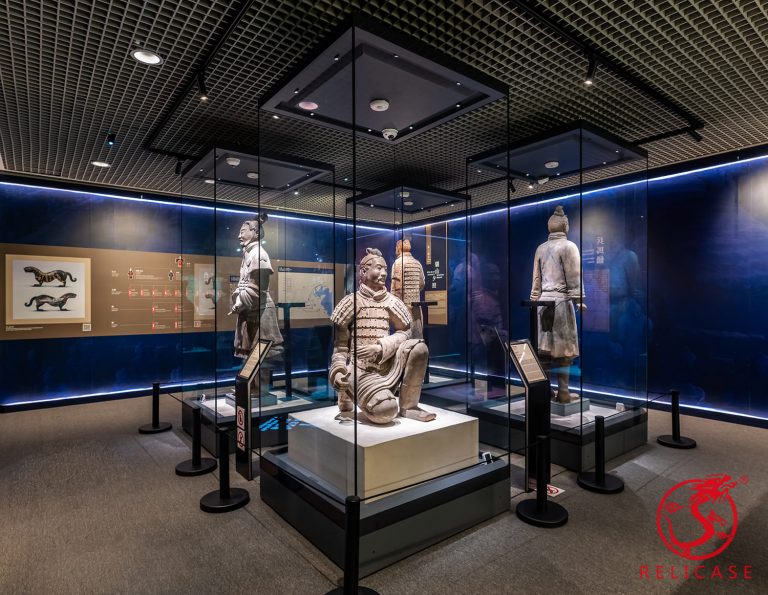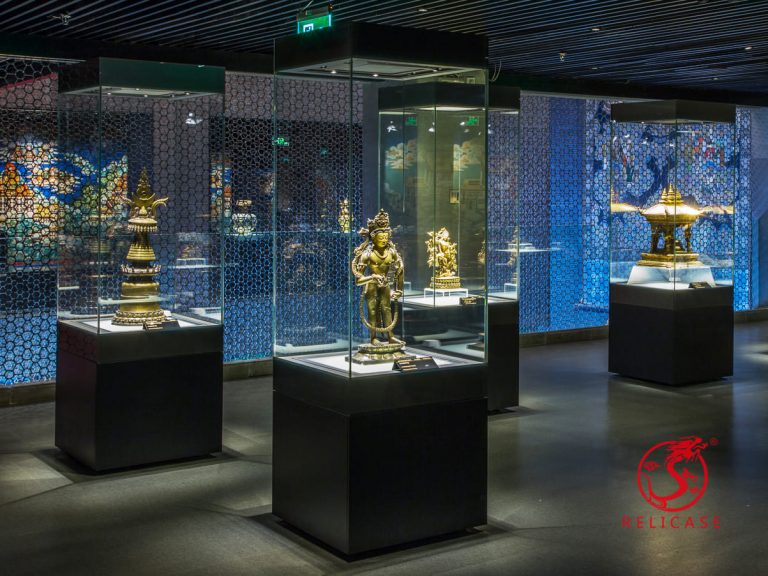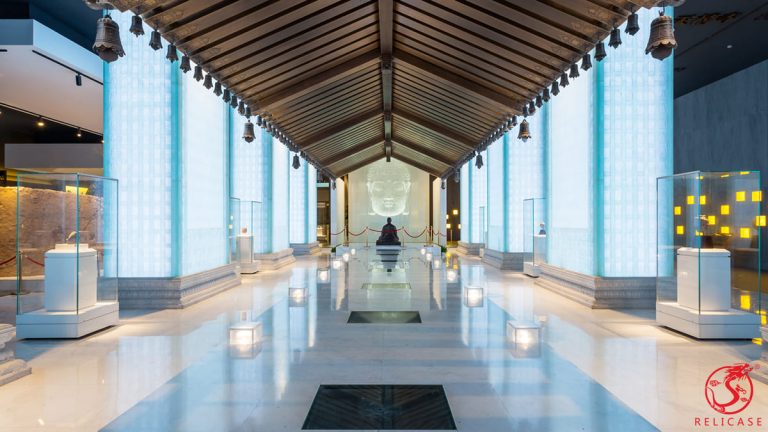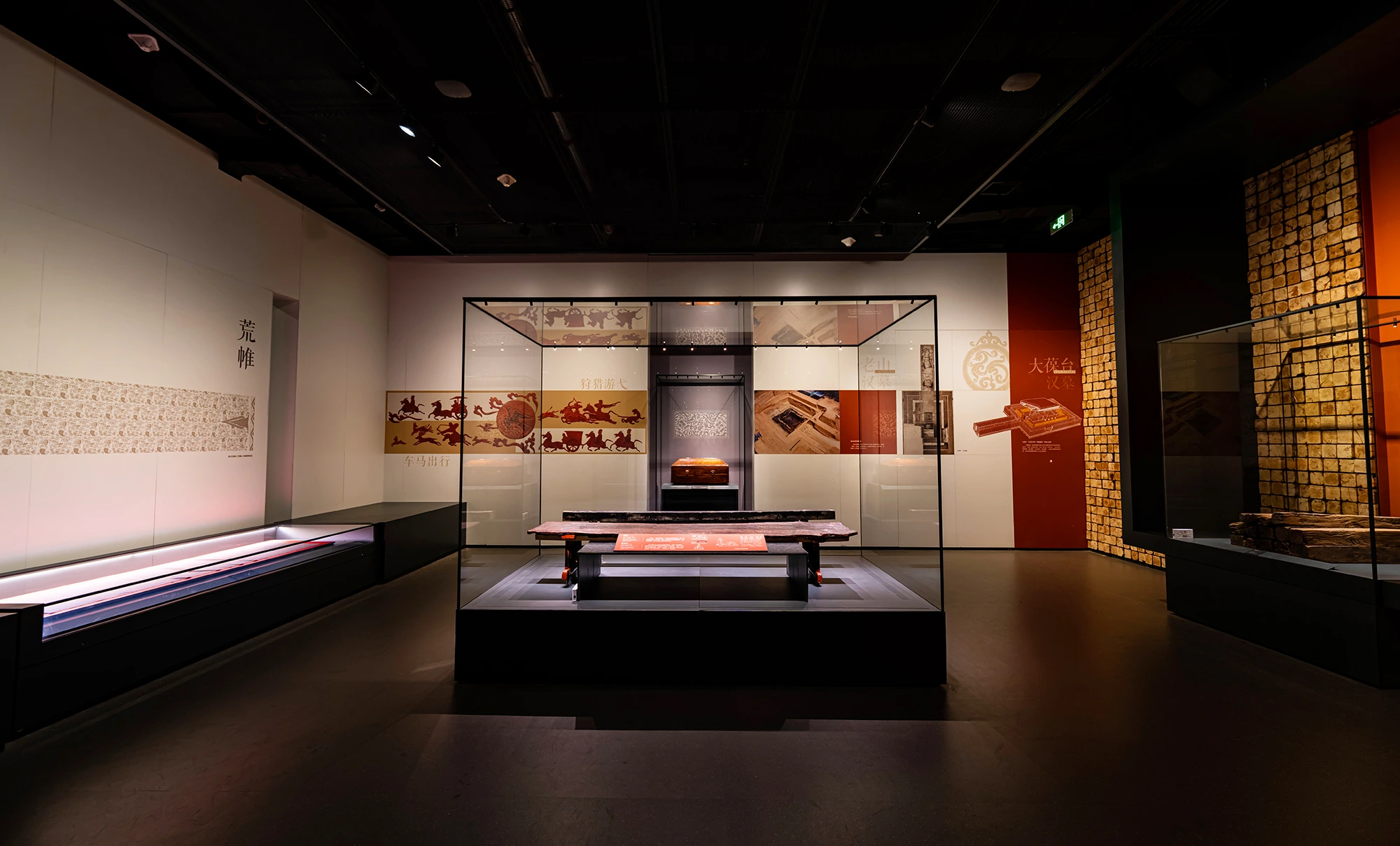Design and production of museum display cases
To meet the high requirements for the design and production of museum display cases, the following considerations should be taken into account:

Materinal Selection:
The materials used in the display cases should be free from chlorine, sulfur, or other acidic ingredients that could potentially damage cultural relics.Avoid materials that can release harmful gases or substances, such as sulfur dioxide, hydrogen sulfide, nitric oxide, nitrogen dioxide, ozone, volatiles organic acids (formic acid and acetic acid), volatile aldehydes (formaldehyde and acetaldehyde), etc.Materials like wood, paint, adhesives, leather, woolen goods, chemical fibers, certain textile dyes, and vitamin textiles should be avoided due to their potential hazards to cultural relics.Stainless steel, aluminum alloy, and surface spray coating steel plates are generally safer materials compared to others.Conduct tests, chemical analysis, or research to ensure that the selected materials do not cause damage to the cultural relics.
Preservation of Temperature and Humidity:
The museum display cases should have good sealing to prevent the exchange of air between the interior and exterior environments.Install automatic temperature and humidity measuring instruments and humidity control equipment inside the showcase.Consider separating the equipment from the showcase body to avoid any direct impact on the exhibits.For humidity control, two options can be considered:a) Install a dehumidifier that automatically activates when the humidity exceeds the required range. The dehumidifier reduces humidity and triggers an alarm signal.b) Utilize hygroscopic buffer materials, like silicone, placed in the lower box of the display case. These materials absorb moisture in humid climates and release moisture in dry climates to maintain stable humidity levels.Ensure sufficient air exchange between the lower silicone box and the upper part of the exhibit by incorporating air holes in the display case.Provide space in the lower part of the display cabinet for the absorbent buffer material box. This allows for the replacement of silicone without the need to move the exhibits.By considering these requirements and incorporating the necessary design and production elements, display cases can effectively preserve cultural relics while providing temperature and humidity control, anti-theft measures, and shock-proofing features tailored to the specific conservation needs of different types of exhibits and environments.
Relicase as a Museum showcase manufacturers.We can Depending on the museum’s overall design, characteristics & collection, we propose a proven solution that best suits your needs and budget and Fair price museum glass case for sale, custom museum glass showcase services.We run our business on three core principles: reliability, quality and cost minimisation. We aim to provide a quality service from initial specification through to completion.

Relicase at Macau Museum: Safeguarding Heritage, Celebrating Legacy
Macau Museum: “Edification of the Masses — Cultural Treasures from the Zhou, Qin, Han, and Tang Dynasties” A Landmark Embraces Innovation The Macau Museum stands proudly atop the historic Mount Fortress, next to the famous Ruins of St. Paul’s. As an iconic symbol of Macau’s history and multicultural heritage, it now embraces the touch of…

Potala Palace
Abstract On April 26, 2017, Relicase completed the showcase project for the Treasure Hall of the Potala Palace in Tibet. The Collections Hall spans three floors and is divided into two major sections, showcasing a total of 273 individual artifacts and replicas, as well as 155 sets of artifacts (or 159 sets, including 147 sets…

Porcelain Tower of Nanjing
Abstract The Porcelain Tower of Nanjing, named and constructed by Emperor Yongle of the Ming Dynasty to honor his parents’ boundless love and virtue, stands as a symbol of filial piety. Celebrated in Du Mu’s poetic lines, “Four hundred and eighty temples of the Southern Dynasties, how many pavilions linger in the mist and rain,”…

The basic guide to Museum Showcase Glass
As museums continue to modernize, the glass used in display cases has undergone a remarkable transformation to meet ever-evolving requirements for safety, visibility, and artifact preservation. The shift from basic transparent materials to specialized, high-performance glass highlights the strides made in exhibition technology. The Journey of Museum Showcase Glass Historically, glass in museum showcases was…

How to Design Lighting for Museum Display Cases
Museum display cases are freestanding, touchable structures. To comply with engineering safety standards, the lighting inside these cases should operate on low-voltage input. Relicase, in line with national standards, ensures the display cases they manufacture meet the following specifications: 1. Protective or isolating measures must be in place between the lighting fixtures and the display…

Display Case Project Research: French Pavilion Shanghai Expo 2010
Project Introduction Architect: Jacques Ferrier Architectures Scenography Engineering: Scenos-associes Vitrines Design: Scenos-associes Vitrines Fabricate & Installation: Relicase Originally constructed as a train station for the 1900 World Fair, the Musée d’Orsay is situated in Paris on the left bank of the Seine River. It has served as a hotel, auction house, and post office for…
